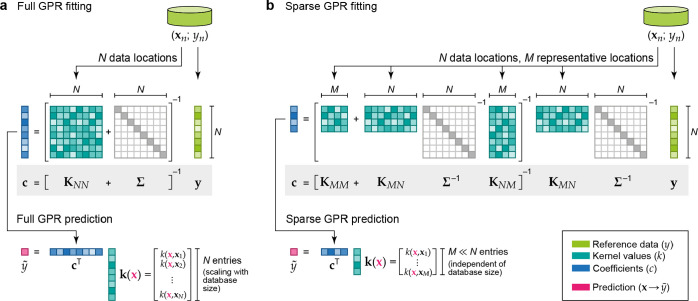Figure 4.
Visualization of the matrix equations that define the fitting of
full (eq 14) and sparse
(eq 11) GPR models,
and the way they are used for prediction. (a) The reference database
consists of entries {xn; yn}; the data labels y1 to yn are collected in the vector y (light green);
the data locations x1 to xN are used to construct the kernel matrix, K, of size N × N (teal).
The regularizer, Σ, is shown as a light gray diagonal
matrix. By solving the linear problem, the coefficient vector c (blue) is computed, and this can be used to make a prediction
at a new location,  (x) (eq 12), the cost of which scales with the number
of data locations, N. (b) In sparse GPR, the full
data vector y is used as well, but now M representative (“sparse”) locations are chosen, with M ≪ N. The coefficient vector is
therefore of length M, and the cost of prediction
is now independent of N.
(x) (eq 12), the cost of which scales with the number
of data locations, N. (b) In sparse GPR, the full
data vector y is used as well, but now M representative (“sparse”) locations are chosen, with M ≪ N. The coefficient vector is
therefore of length M, and the cost of prediction
is now independent of N.

